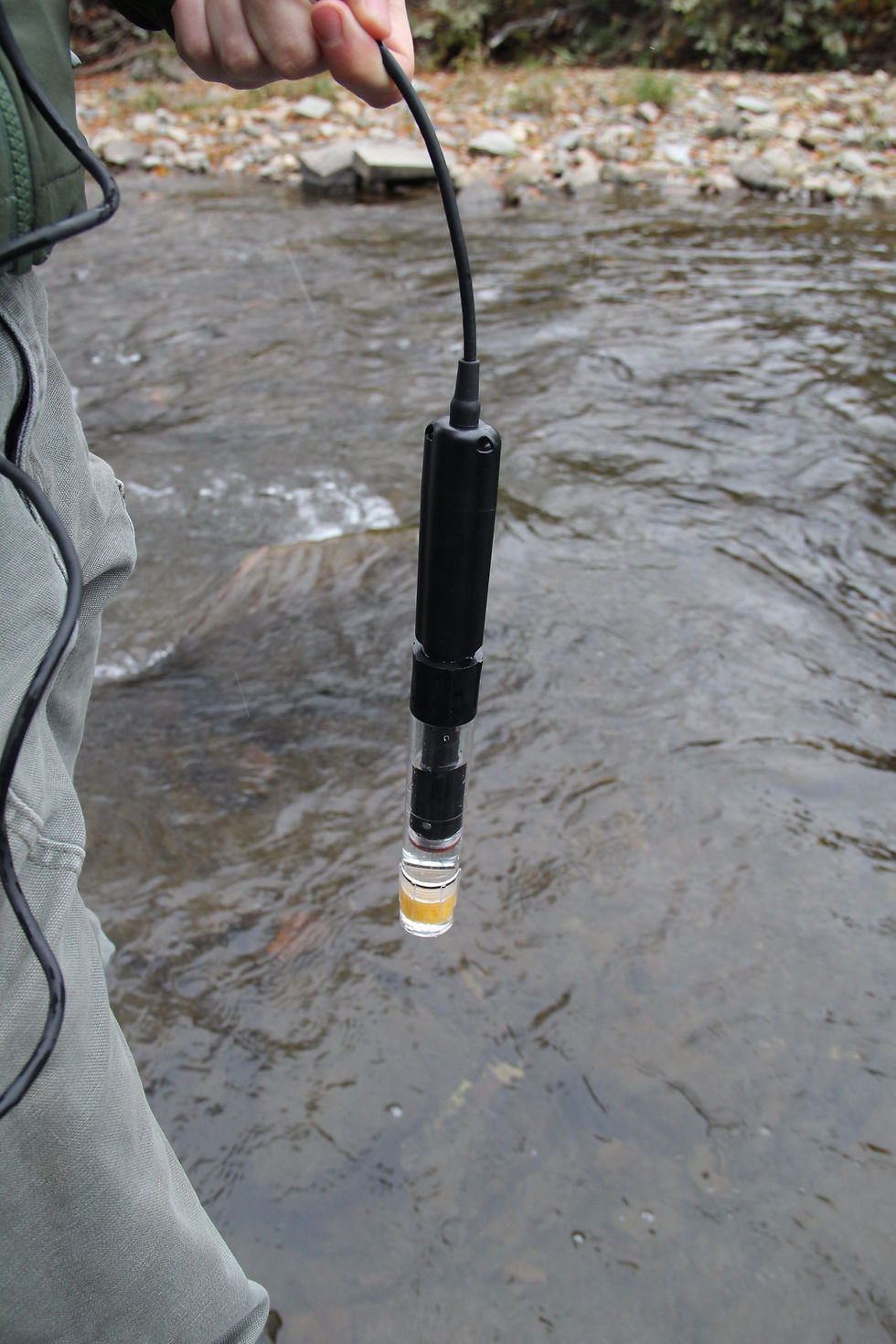Problems Upstream
- 16wandon
- Oct 31, 2018
- 2 min read
After hurricane Irene's devastating effects on Vermont's stream ecology, the Dog River was faced with a crippled Native Brook Trout population. Since then, procedures have been taken to ensure the rehabilitation of the trout to return to a sustainable population. Upon facing the depletion of trout numbers, a variety of obstacles were found that hinders the effective growth of the population. Going upstream towards the origin of the Dog River, a traditional culvert was found under a road crossing on Warren Mountain. As it can be seen in the picture, there is a sizable elevation change between the culvert and the stream. Unlike some other fish species, Native Brook Trout do not posses the capability to jump out of the water to climb over obstacles such as this culvert. This proves to be a great problem with the reproduction the species because they are given limited access to where in the river they can spawn. This limitation can lead to a cap on the growth of the population. If too many fish begin to spawn down stream of this culvert, then the water ways can become too populated. While growth in the population is needed, too many trout in a secluded area will produce negative effects on the fish in that are. Giving the trout access to the entirety of the river as far upstream as possible will help distribute the population which leads to a more effective growth.
The most simplistic and effective solution to this problem is to construct an embedded or natural bottom culvert. An embedded culvert can either consist of a half pipe, rather than a full pipe, or submerging the lower half of the full pipe in the ground to allow for natural stream flow. This style of culvert allows for the river to remain a constant elevation giving the native Brook trout the opportunity to travel upstream and spread out throughout the river. Other benefits come with this style of culvert such as erosion control and steadier flow rate. Embedded culverts are often lower and wider than tradition culverts allowing for a more steady and level flow through the culvert. This steady flow rate makes it easier for fish and other animals in the river to swim upstream effortlessly. The erosion impact of high flowing water is also reduced due to more calm flowing river. By changing this traditional culvert to an embedded culvert will help promote the growth for the Native brook Trout as well as help maintain the durability and sustainability of the Dog River.






Comments